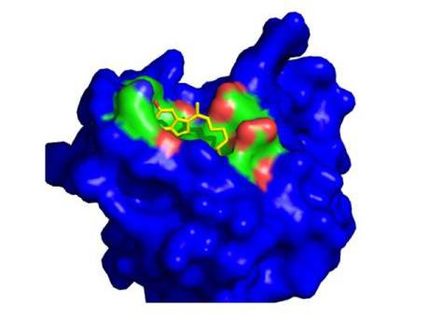Heptares generates new insight into caffeine's molecular pharmacology to drive design of next-generation CNS therapeutics
First 3-D X-ray Co-structures of Caffeine and other Xanthines Bound to G-Protein Coupled Receptor (GPCR) Published in the Journal Structure
Advertisement
The journal Structure has published data from researchers at Heptares Therapeutics elucidating the molecular pharmacology of caffeine and its interaction with G-protein coupled receptors (GPCRs). Caffeine is known to inhibit adenosine receptors, a subfamily of GPCRs widely expressed in the brain, cardiovascular and immune systems. Yet the interaction between caffeine and adenosine receptors has never been well characterized. In the Structure publication, Heptares scientists present the first three-dimensional X-ray crystal co-structures of caffeine and other xanthine compounds bound to the adenosine A2A receptor. The structural data was collected at Diamond Light Source, the UK’s national synchrotron facility.
Methylxanthines, including caffeine (in coffee), theophylline (in tea), and theobromine (in chocolate) are among the most widely consumed substances in the world. Caffeine is present in many foods and drinks and reportedly consumed at an average rate of 200mg per day by Americans. In 2000, the Journal of the American Medical Association (JAMA) published research showing a correlation between higher intake of caffeine and lower incidence of Parkinson’s disease, a devastating and incurable neurological disorder.
While caffeine exerts a broad range of adverse effects, and is therefore poorly suited for use as a drug, pharmaceutical researchers have generated more potent and selective adenosine receptor modulators. A2A receptor antagonists, in particular, have shown clinical efficacy in the treatment of Parkinson’s disease. First generation A2A antagonists using older furan and xanthine type chemical structures have been associated with various safety, tolerability, and pharmacokinetic limitations. Next-generation A2A antagonists, leveraging entirely novel chemotypes discovered by Heptares using structural and binding information obtained for the first time through its unique GPCR capabilities, are being developed under a partnership agreement between Heptares and Shire.
“These co-structures of xanthines in complex with the adenosine A2A receptor advance our understanding of the molecular pharmacology underlying key clinical effects of caffeine and related compounds,” said Dr. Fiona Marshall, Chief Scientific Officer of Heptares. “This information has already shaped the design of novel non-xanthine and non-furan drug candidates for Parkinson’s disease and other neurological indications. The data published in Structure also highlight an advantage of the Heptares StaR® technology in engineering GPCR-ligand co-structures, even with fragment-sized, low-potency molecules such as caffeine.”
Original publication
Doré, AS et al.; "Structure of the adenosine A2A receptor in complex with ZM241385 and the xanthines XAC and caffeine."; Structure (2011) 19, 1–11



























































